AFI
SOURCE: AFI
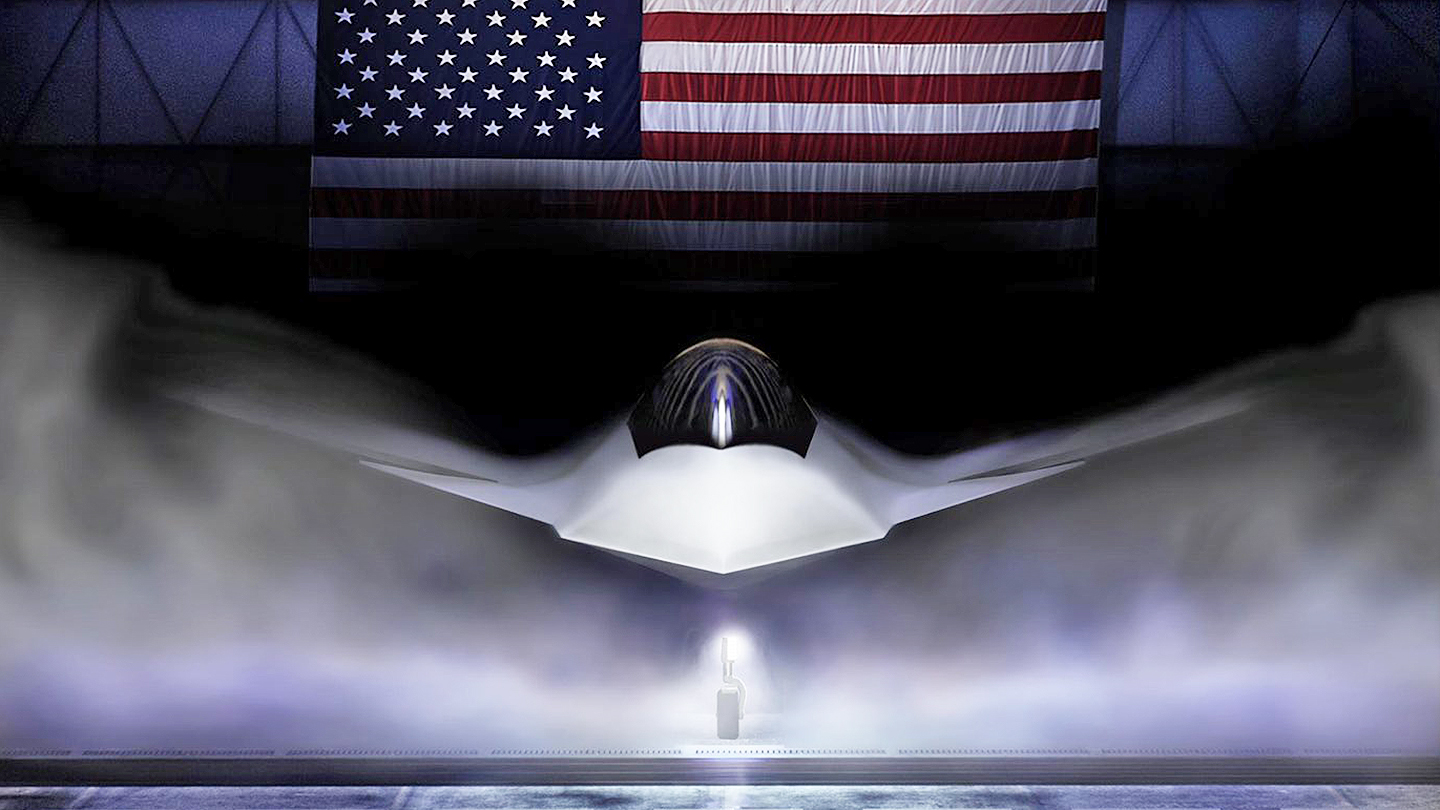

Boeing’s upcoming F-47, the United States’ flagship sixth-generation fighter jet developed under the Next Generation Air Dominance (NGAD) program, promises to redefine air superiority with its advanced stealth, Mach 2 speed, and integration with autonomous drones. However, despite its technological prowess, the F-47 may face significant hurdles in securing export markets—a critical factor in offsetting its high development and production costs.
Unlike the fifth-generation era, where the U.S. initially dominated with the F-22 Raptor and later the F-35 Lightning II, the sixth-generation landscape is shaping up to be fiercely competitive from the outset, with close U.S. allies and adversaries alike pursuing their own programs, potentially sidelining Boeing’s offering.
Continue readingSOURCE: AFI


On Pakistan Day, the Pakistan Air Force (PAF) released a stirring promotional video paying tribute to the resilience and spirit of the entire Pakistani nation. The video, a blend of patriotic fervor and military pride, showcased the PAF’s dedication to defending the country’s skies. However, amidst the grandeur of the tribute, a subtle yet telling detail emerged—evidence of the PAF’s persistent preoccupation with the Indian Air Force’s (IAF) Su-30MKI, a formidable multirole fighter jet that continues to dominate discussions within Pakistan’s military circles.
The promo video featured a segment with Squadron Leader and an instructor from the PAF’s 9 Griffins Squadron briefing their team ahead of a planned sortie. What caught the eye of keen observers was the presence of a scaled-down model of the IAF’s Su-30MKI in their hands during the briefing. This wasn’t a mere prop—it was a clear indication that the PAF’s training and tactical planning remain heavily centered on devising counter-strategies to tackle this Russian-origin aircraft, affectionately nicknamed “Rambha” by Indian forces. The inclusion of the Su-30MKI model underscores how deeply the aircraft has embedded itself in the PAF’s operational psyche.
Continue readingSOURCE: AFI
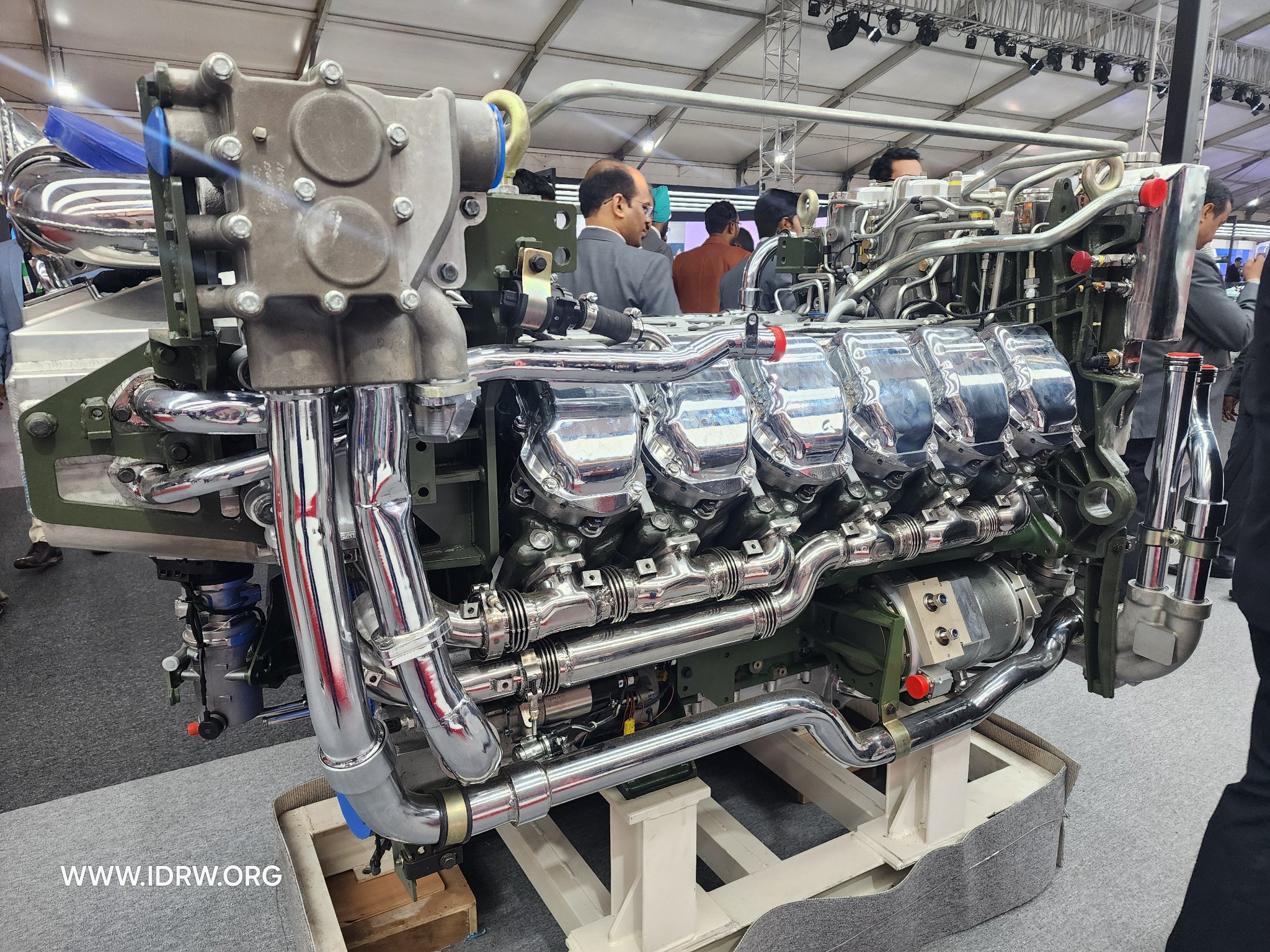

The realm of military engineering, particularly in the domain of Main Battle Tanks (MBTs), hinges on the performance of powertrains that drive these behemoths across diverse and often unforgiving terrains. The development of India’s indigenous DATRAN 1500 engine, a collaborative effort between the Defence Research and Development Organisation (DRDO) and Bharat Earth Movers Limited (BEML), marks a significant milestone in the country’s pursuit of self-reliance in defense technology.
This article delves into a detailed comparison of the DATRAN 1500 with its global counterparts in the same class—the MT 883 Ka 501 from Germany, the Batu from Turkey, and the DV27K from South Korea—showcasing how India’s offering stands tall in a competitive landscape.
Continue readingSOURCE: AFI


The Indian Army has taken a strategic step toward bolstering its battlefield deception tactics by issuing a Request for Information (RFI) for the procurement of 54 sets of Inflatable Mock-Up Bridges. This innovative acquisition includes 48 mid-sections and 6 end-sections, designed to mimic the appearance and signatures of the in-service Ponton Modular System (PMS) Bridge. The RFI, aimed at identifying capable vendors and Original Equipment Manufacturers (OEMs), underscores the Army’s intent to deploy these decoys across desert, semi-desert, and riverine terrains, enhancing its ability to mislead adversaries in both day and night conditions.
The Inflatable Mock-Up Bridge is engineered to be a near-perfect replica of the PMS Bridge, a modular bridging system used by the Indian Army for rapid river crossings and logistical support. In the visual spectrum (380 to 780 nm), the mock-up must be indistinguishable from the real thing when viewed from 500 meters during daytime under clear, bright sunlight, and from 100 meters at night under full moonlight. This level of fidelity ensures that enemy reconnaissance—whether human or optical—struggles to differentiate the decoy from an operational bridge at operational distances.
Continue readingSOURCE: AFI


Zeus Numerix, a pioneering Indian defence technology startup, has achieved a significant milestone in the realm of unmanned aerial vehicle (UAV) weaponization with the successful development and trial of its UAV-dropped munitions in the 3-25 kg class. Equipped with an in-house developed Ejector Rack Unit (ERU) as part of its UAV Weaponization Kit (UVW), this innovative system offers versatile configurations capable of carrying single or triple gravity-dropped munitions, with a maximum payload capacity of 55 kg. The Indian Army closely monitored the recently completed trials, underscoring the strategic importance of this advancement for India’s military modernization efforts.
The ERU supports multiple configurations: a single munition or a triple-munition setup, with a total payload capacity of up to 55 kg. Zeus Numerix has developed six distinct munition types, ranging from 2 kg to 25 kg, catering to diverse operational needs—from small-scale tactical strikes to larger, high-impact missions. These munitions are gravity-dropped, relying on the ERU’s precision release mechanism to ensure accurate delivery to targets.
Continue readingSOURCE: AFI

Digital Combat Simulator (DCS) World, a premier flight simulation platform developed by Eagle Dynamics, has captivated aviation enthusiasts and gamers with its high-fidelity aircraft modules, realistic physics, and immersive combat scenarios. Featuring a diverse roster of aircraft—from the American F-16C Viper to the Russian MiG-29 and even vintage warbirds like the P-51 Mustang—DCS World thrives on its detailed recreations of military hardware. Yet, despite its global appeal and the growing prominence of India’s indigenous Light Combat Aircraft (LCA) Tejas, this unique fighter jet remains conspicuously absent from the DCS module lineup. While there is significant interest from the DCS community in seeing a Tejas module, several practical, technical, and strategic factors explain its exclusion.
The LCA Tejas, designed by India’s Aeronautical Development Agency (ADA) and manufactured by Hindustan Aeronautics Limited (HAL), is a compelling candidate for DCS World. As a lightweight, single-engine, multirole fighter, it boasts a delta-wing configuration, advanced fly-by-wire controls, and a growing suite of modern avionics and weaponry, including the indigenous Uttam AESA radar and Astra missile. Its evolution from a replacement for aging MiG-21s to a 4.5-generation platform with variants like the Tejas Mk1A and the upcoming Mk2 makes it a fascinating study in modern aerospace design.
Continue readingSOURCE: AFI
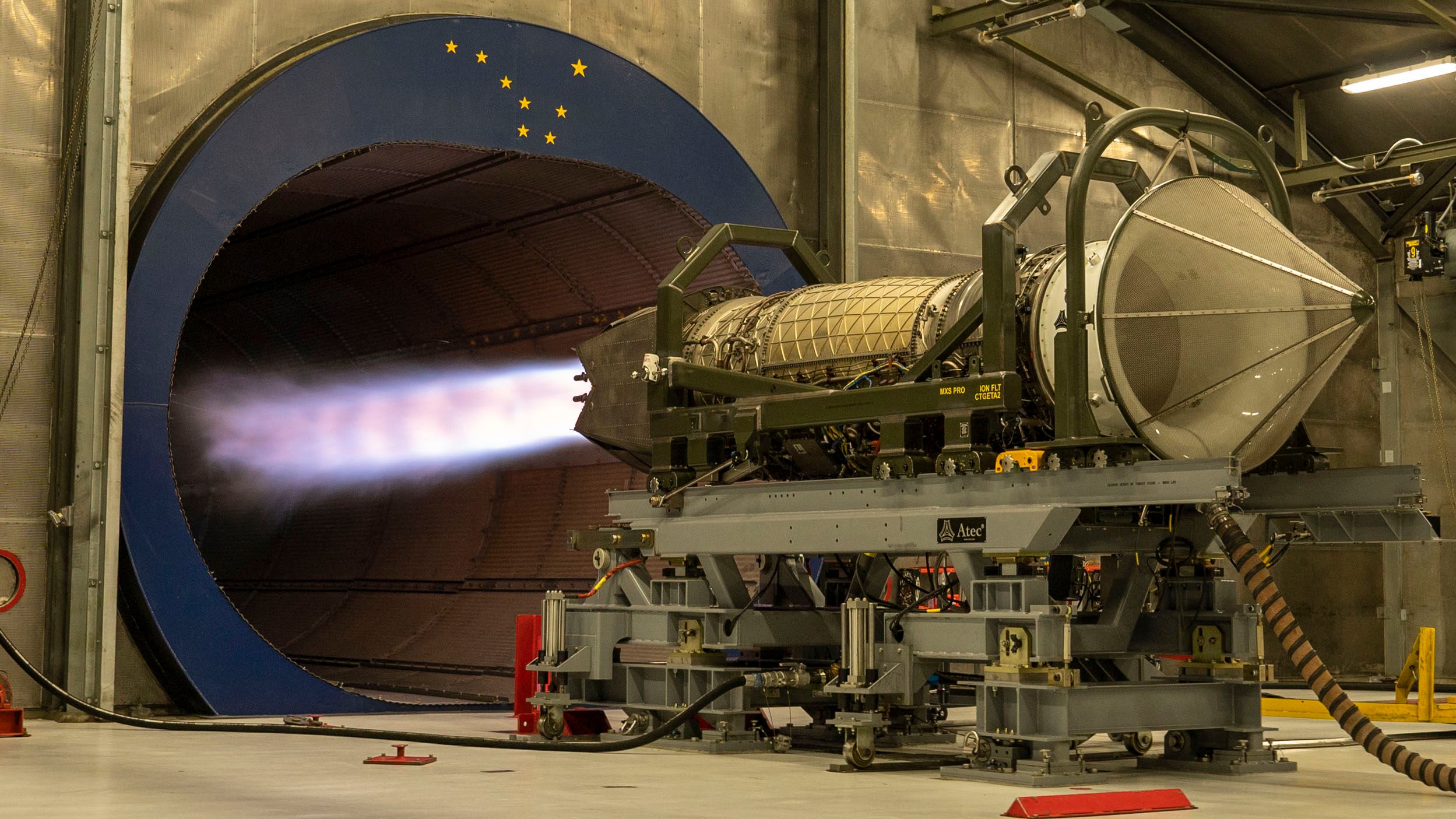

The Indian Air Force (IAF) has tasked the Gas Turbine Research Establishment (GTRE) with developing a new engine for the Advanced Medium Combat Aircraft (AMCA), India’s ambitious fifth-generation stealth fighter. The IAF’s specific requirement is for an engine capable of delivering supercruise—a sustained supersonic flight without afterburners—at an altitude of 12 kilometers (H=12 km), a speed of Mach 1.3, and a dry thrust of 72 kN. This move underscores India’s determination to equip the AMCA with cutting-edge technology, aligning it with global benchmarks for fifth-generation fighters. However, the question remains: Is supercruise a universally desired criterion for modern fighter jets, and how does it stack up among existing fifth-generation platforms?
Supercruise, the ability to maintain supersonic speeds without the fuel-guzzling afterburner, offers significant tactical advantages. It enhances fuel efficiency, extends combat range, and reduces the infrared signature, making the aircraft harder to detect. For the AMCA, achieving supercruise at Mach 1.3 (approximately 1,600 km/h at 12 km altitude) with a dry thrust of 72 kN would provide a strategic edge, particularly in India’s challenging operational environment, where high-altitude performance is critical. The IAF’s focus on this capability reflects its intent to ensure the AMCA can penetrate contested airspace and engage adversaries effectively while maintaining stealth and endurance.
Continue readingSOURCE: AFI


The recent unveilings of sixth-generation fighter jet programs by China and the United States have sent ripples through the global defense community, spotlighting the accelerating race for air superiority. In India, these developments have sparked a heated debate: should India join the UK-Italy-led Global Combat Air Programme (GCAP) as a partner, leveraging the same engine technology for its indigenous Advanced Medium Combat Aircraft (AMCA)? Such a move could position India alongside leading nations by 2035, when both its 5.5-generation AMCA and a collaborative 6th-generation fighter are slated for induction, avoiding the perennial trap of playing catch-up in military aviation.
China’s reveal of a tailless, stealth-oriented sixth-generation fighter prototype in October 2024, followed by the U.S. Air Force’s progress with its Next Generation Air Dominance (NGAD) program—highlighted by Boeing’s F-47 renderings—underscores the rapid evolution of air combat technology. These jets promise unprecedented stealth, AI-driven autonomy, and networked warfare capabilities, leapfrogging the fifth-generation platforms like the F-35 and J-20 that currently dominate. For India, whose air force grapples with a shrinking squadron strength and aging fleets, the prospect of lagging further behind its rivals, particularly China, is a pressing concern.
Continue readingSOURCE: AFI
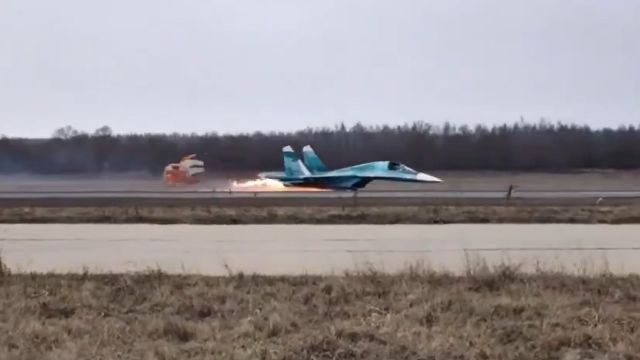

On March 22, 2025, a Russian Su-34 fighter-bomber made an extraordinary belly landing at an undisclosed airfield, an event captured in a striking video circulating widely on X. The footage reveals the twin-engine aircraft approaching the runway with its landing gear retracted, relying entirely on its underside to touch down. What could have been a catastrophic failure instead became a testament to the pilot’s skill and the jet’s robust design, as it skidded to a controlled stop with sparks flying but no apparent structural collapse.
The video shows the Su-34, a frontline fighter-bomber designed by Sukhoi, descending smoothly despite the absence of its wheels. As it contacted the pavement, the aircraft’s underside scraped along the runway, generating a shower of sparks. Remarkably, the crew deployed its drag parachutes at precisely the right moment, slowing the jet’s momentum and bringing it to a clean halt—almost as if it had executed a conventional landing. The canopy was jettisoned mid-flight or post-landing, likely to facilitate a swift evacuation, underscoring the crew’s preparedness for the emergency.
Continue readingSOURCE: AFI
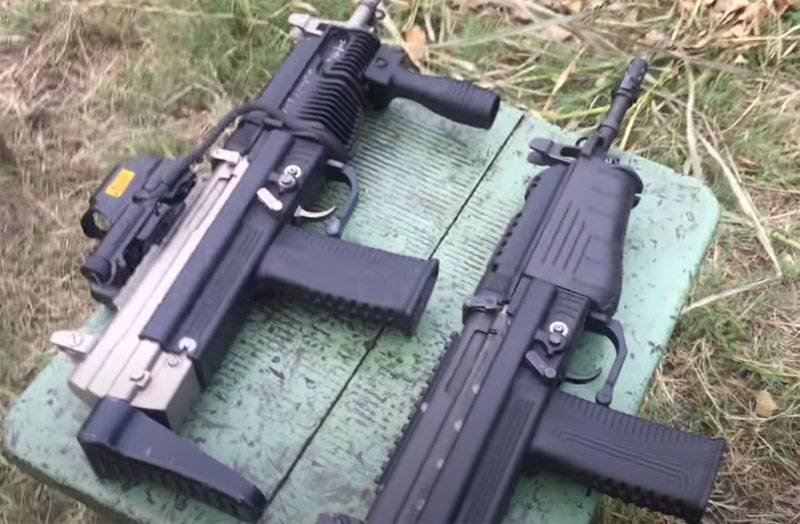

India’s security forces have gained a formidable edge in their ongoing battle against Left-Wing Extremism (LWE) with the deployment of the indigenously developed Joint Venture Protective Carbine (JVPC). Designed by the Defence Research and Development Organisation’s (DRDO) Armament Research and Development Establishment and manufactured by Advanced Weapons and Equipment India Limited (AWEIL), the JVPC has emerged as a game-changer in close-range combat, particularly in the dense jungles of Chhattisgarh where security personnel confront Naxal insurgents.
The JVPC was conceptualized to replace the outdated 9mm submachine guns previously used by Indian forces, introducing a unique 5.56 x 30mm calibre tailored for modern operational needs. Weighing just 2.98 kg, thanks to its lightweight polymer construction, the weapon combines portability with a high rate of fire and an effective range of 200 meters. Its design incorporates advanced features such as visible and invisible laser designators, silencers, and even bayonets, making it a versatile “beast” for close-quarters assaults.
Continue readingSOURCE: AFI


Nearly 15 years after its initial proposal, the Indian Army’s ambitious Future Main Battle Tank (FMBT) program remains in limbo, with the General Staff Qualitative Requirements (GSQR)—a critical document outlining the tank’s detailed specifications—yet to be issued. Conceived as a next-generation replacement for the aging fleet of Soviet-era T-72 Main Battle Tanks (MBTs), the FMBT was envisioned to modernize India’s armored forces and bolster its combat capabilities. However, prolonged delays in finalizing requirements have left the project stalled, raising questions about the Army’s preparedness for future conflicts.
The FMBT initiative traces its origins to 2010, following the successful trials of the indigenous Arjun Mk1 tank against the Russian T-90 in Rajasthan. Buoyed by this achievement, the Defence Research and Development Organisation (DRDO) proposed the development of a cutting-edge tank to succeed the T-72s, which have been the backbone of India’s armored corps since the 1980s. The Army currently operates around 2,400 T-72s, many of which have exceeded their 30-year service life and are increasingly obsolete in the face of modern warfare’s demands. The FMBT was intended to address these shortcomings, promising advanced features like active protection systems, enhanced mobility, and network-centric capabilities.
Continue readingSOURCE: AFI


SSS Defence, a premier Indian defence weapon systems company, has established itself as a key player in the manufacturing of small arms, ammunition, and high-end optics for military and law enforcement applications. Backed by a 70-year legacy of manufacturing expertise through its parent company, Stumpp Schuele & Somappa Springs, SSS Defence has consistently pushed the boundaries of innovation in India’s private defence sector.
In a recent development that has caught the attention of defence enthusiasts and analysts alike, the firm appears to be working on a stand-alone grenade launcher, a project that was inadvertently showcased, sparking intrigue about its potential capabilities and implications.
Continue readingSOURCE: AFI


In a landmark decision for India’s space program, the Central Government has granted approval to the Indian Space Research Organisation (ISRO) for its ambitious Mars Lander Mission, officially known as Mangalyaan-2. This approval marks a significant step forward in India’s quest to expand its interplanetary exploration capabilities and solidify its position among the world’s leading spacefaring nations. Building on the success of the Mars Orbiter Mission (MOM), or Mangalyaan-1, which made India the first Asian country to reach Martian orbit in 2014, Mangalyaan-2 aims to achieve an even more challenging feat: landing a spacecraft on the Red Planet.
The approval, announced on March 22, 2025, follows the Space Commission’s endorsement of the mission on February 21, 2025, and reflects the government’s commitment to advancing India’s space ambitions. Unlike its predecessor, which was an orbiter mission designed to study Mars from above, Mangalyaan-2 is poised to take India’s exploration efforts to the surface of Mars. The mission is expected to include a lander and a rover, with potential plans for a pioneering Martian helicopter, making it one of ISRO’s most complex undertakings to date.
Continue readingSOURCE: AFI


In a significant step toward deepening military cooperation, India and Armenia have initiated discussions on conducting joint training for their Special Forces. This move comes alongside Armenia’s plans to procure loitering munitions from India to equip its elite Spetsnaz detachments, signaling a strengthening partnership between the two nations. The collaboration is poised to enhance Armenia’s military capabilities, particularly in mountainous warfare, while fostering a strategic counterbalance to regional geopolitical alignments, notably the Azerbaijani-Turkish-Pakistani axis.
As part of the proposed training initiative, Armenia’s Spetsnaz detachments and mountain servicemen could be deployed to India’s High Altitude Warfare School (HAWS) in Jammu & Kashmir. Nestled in the rugged Himalayas, HAWS is renowned for its rigorous mountain warfare training programs, making it an ideal venue for Armenian forces to hone their skills in terrain similar to their homeland’s treacherous mountains.
Continue readingSOURCE: AFI


In a provocative statement that has stirred controversy, Abdul Basit, the former Pakistan High Commissioner to India, has inserted himself into the ongoing debate over India’s proposed delimitation exercise. Basit, known for his contentious tenure as Pakistan’s envoy from 2014 to 2017, recently commented on the Dravida Munnetra Kazhagam (DMK)-led opposition to the delimitation process, suggesting that an imbalance favoring North India could push Tamil Nadu toward armed rebellion against the Indian state.
Delimitation—the periodic redrawing of electoral constituencies based on population—is a sensitive issue in India, given its federal structure and diverse demographics. The last full delimitation exercise was completed in 1976, with constituency boundaries frozen until after the 2001 Census under the 42nd Amendment. However, with the freeze set to expire post-2026, the upcoming exercise—likely based on the yet-to-be-conducted 2021 Census—has sparked concerns about a potential shift in political power from South India to the more populous North.
Continue reading